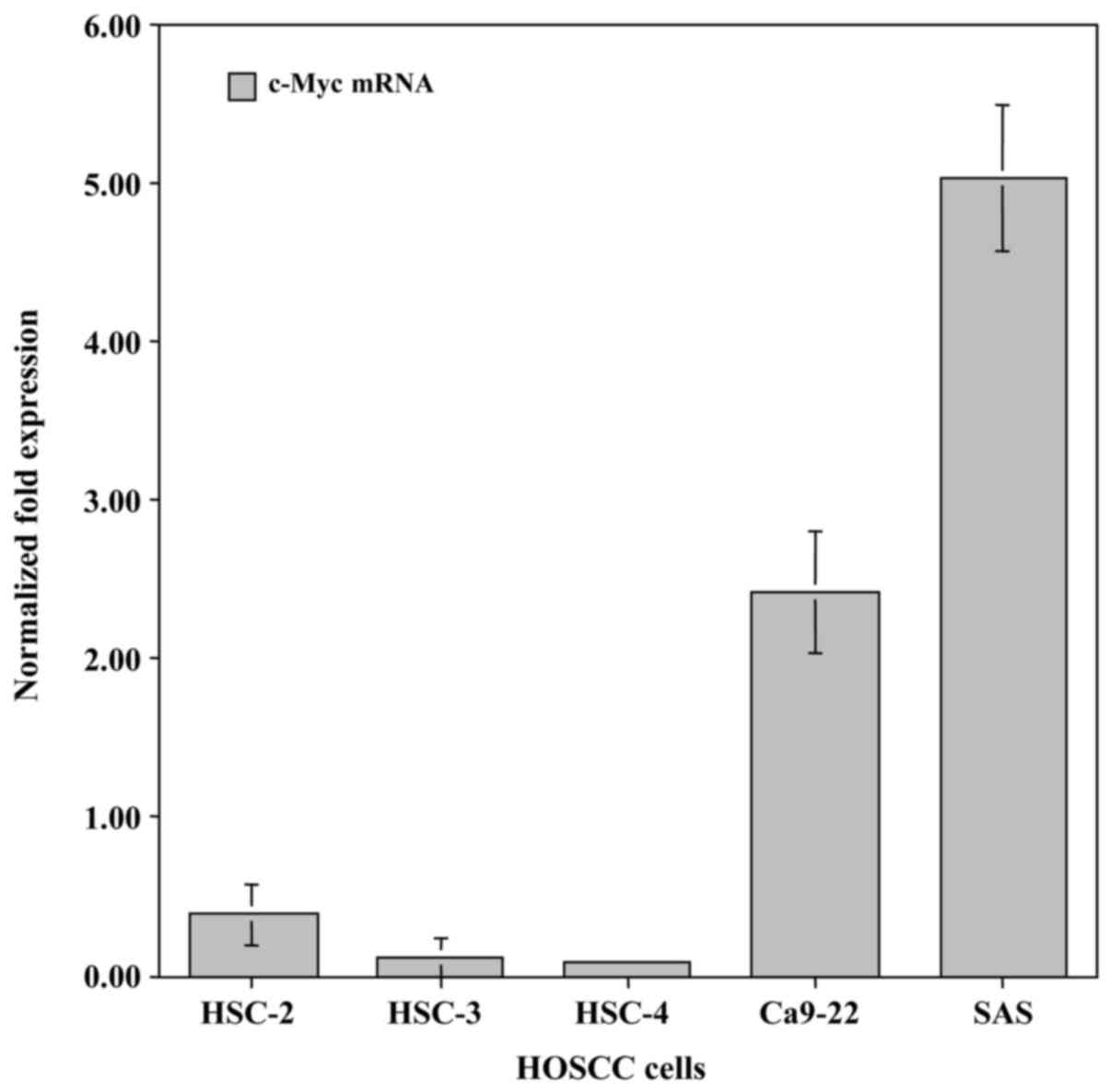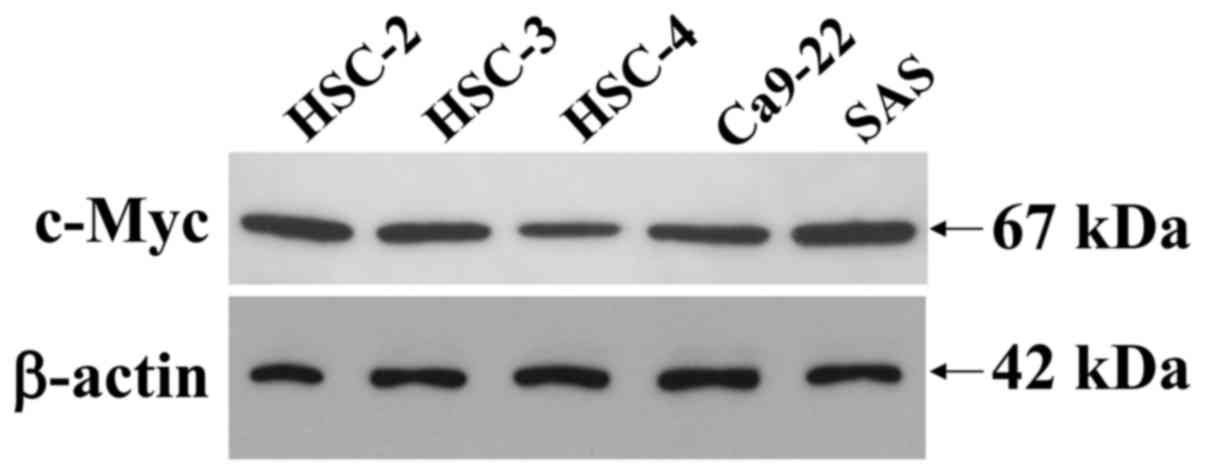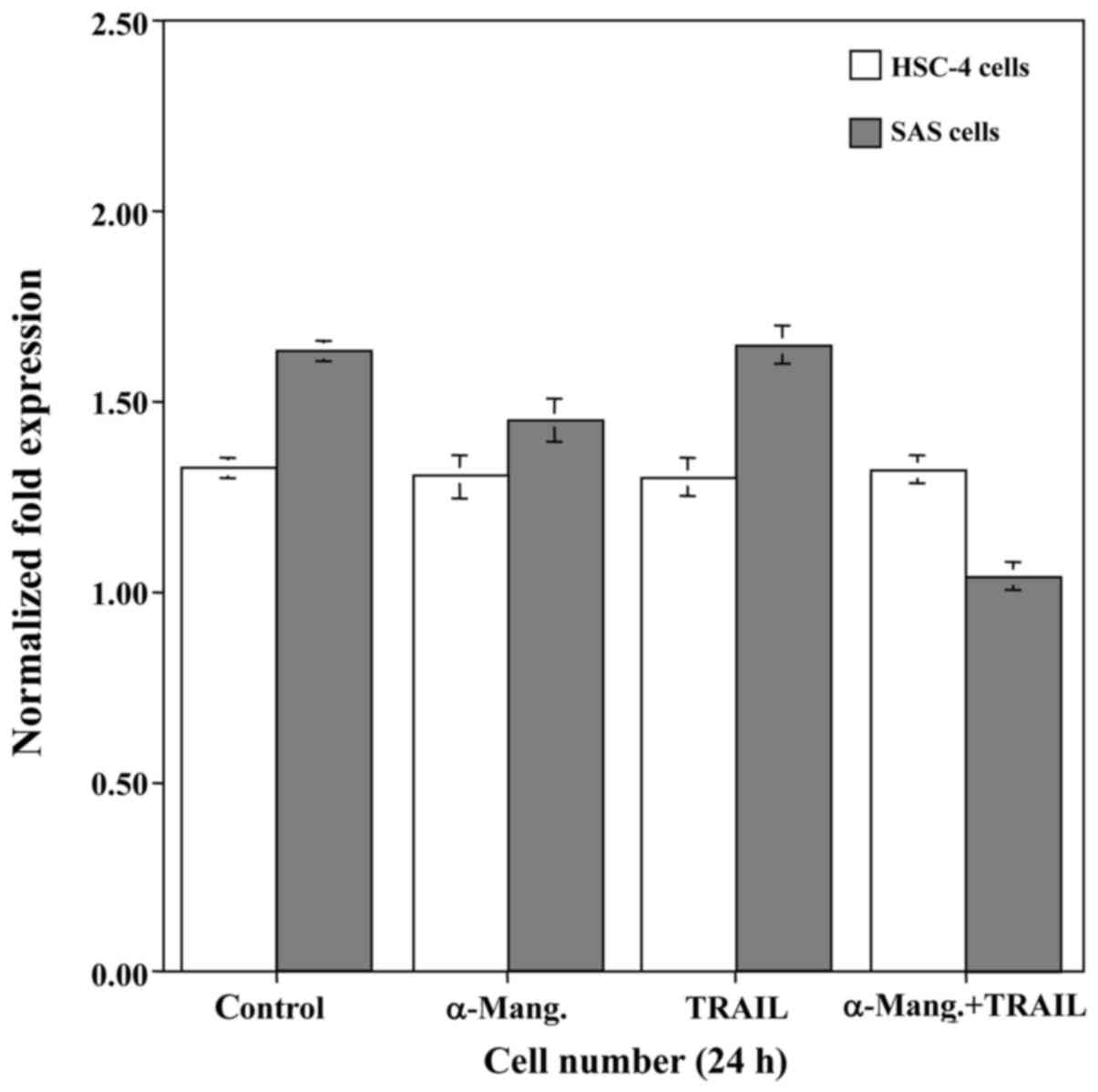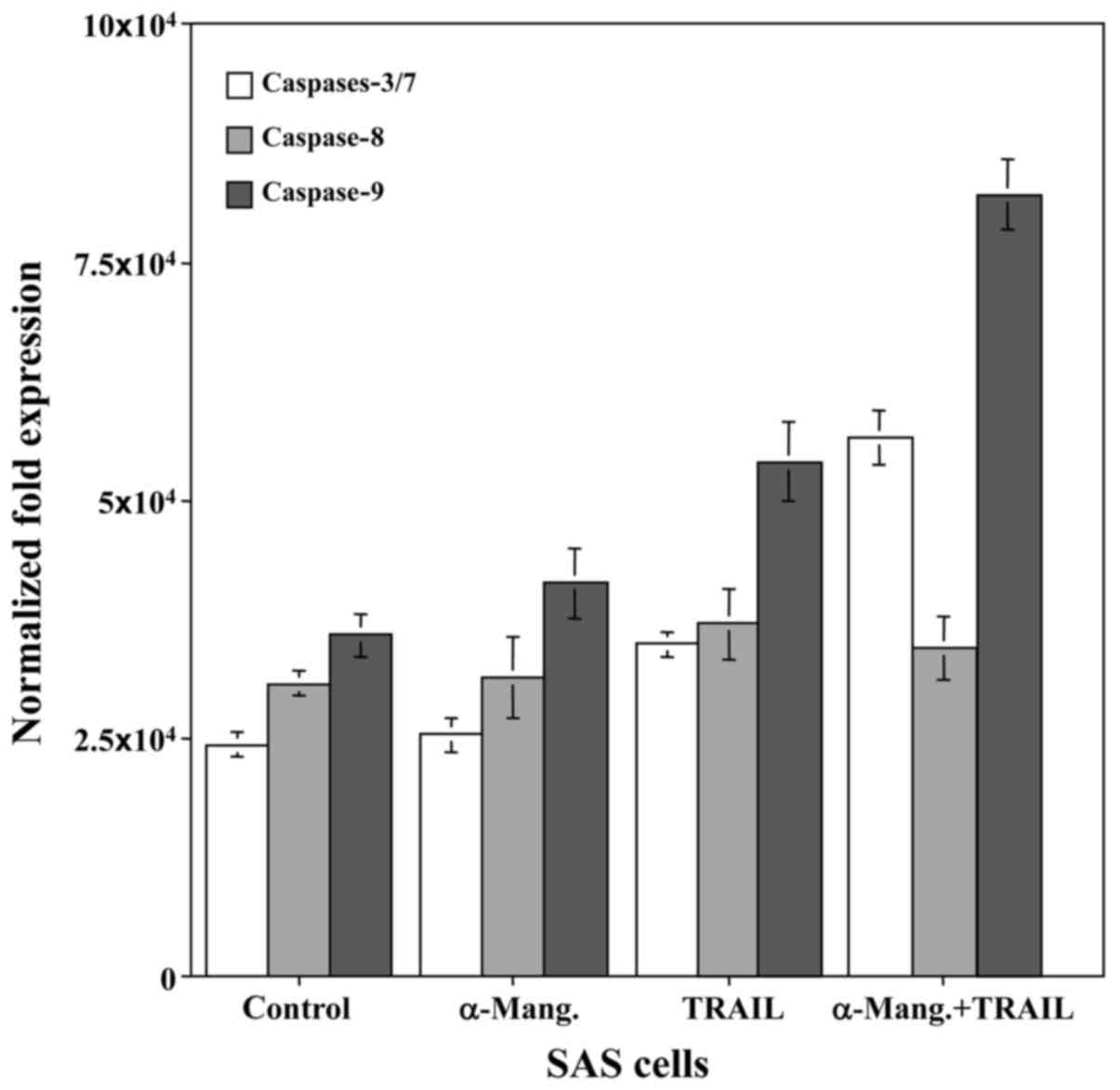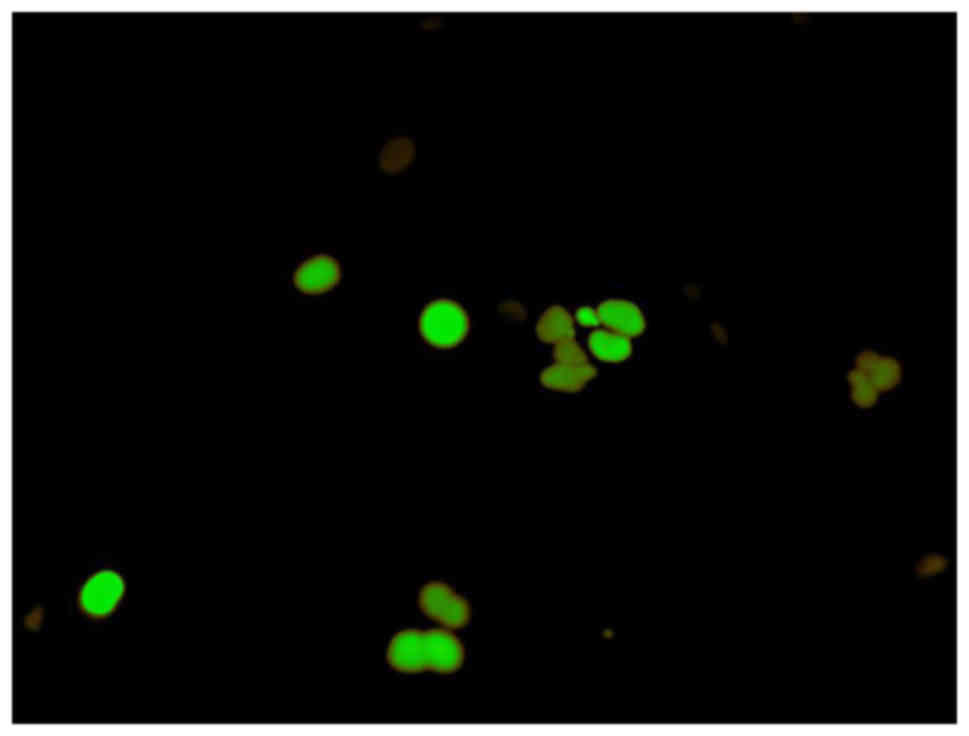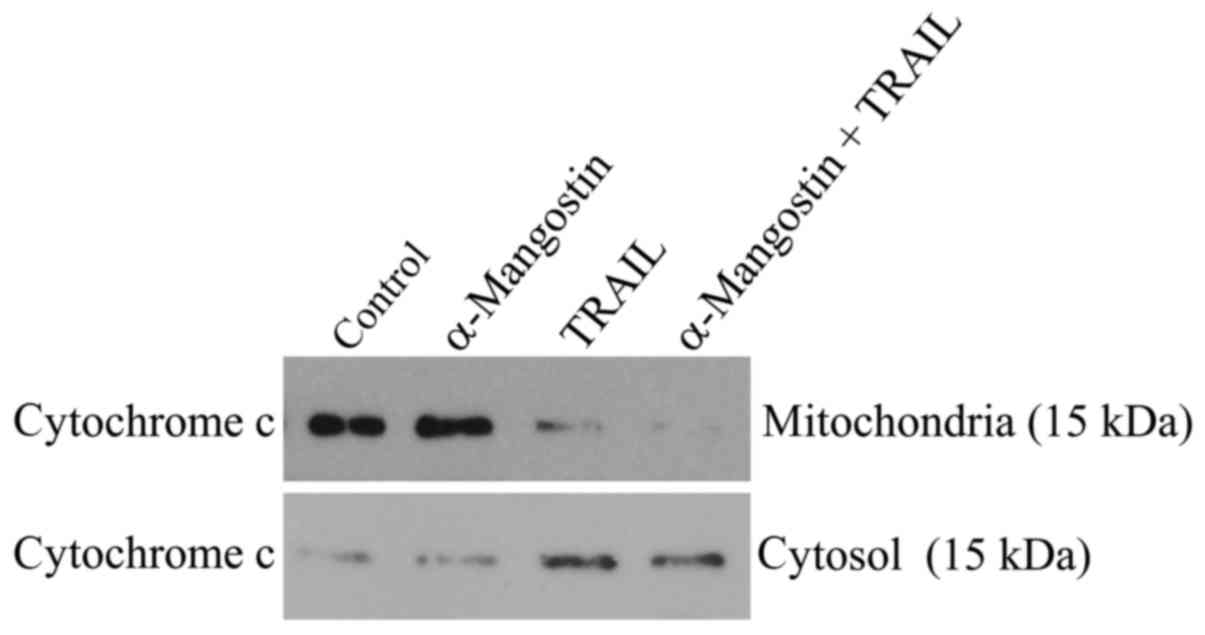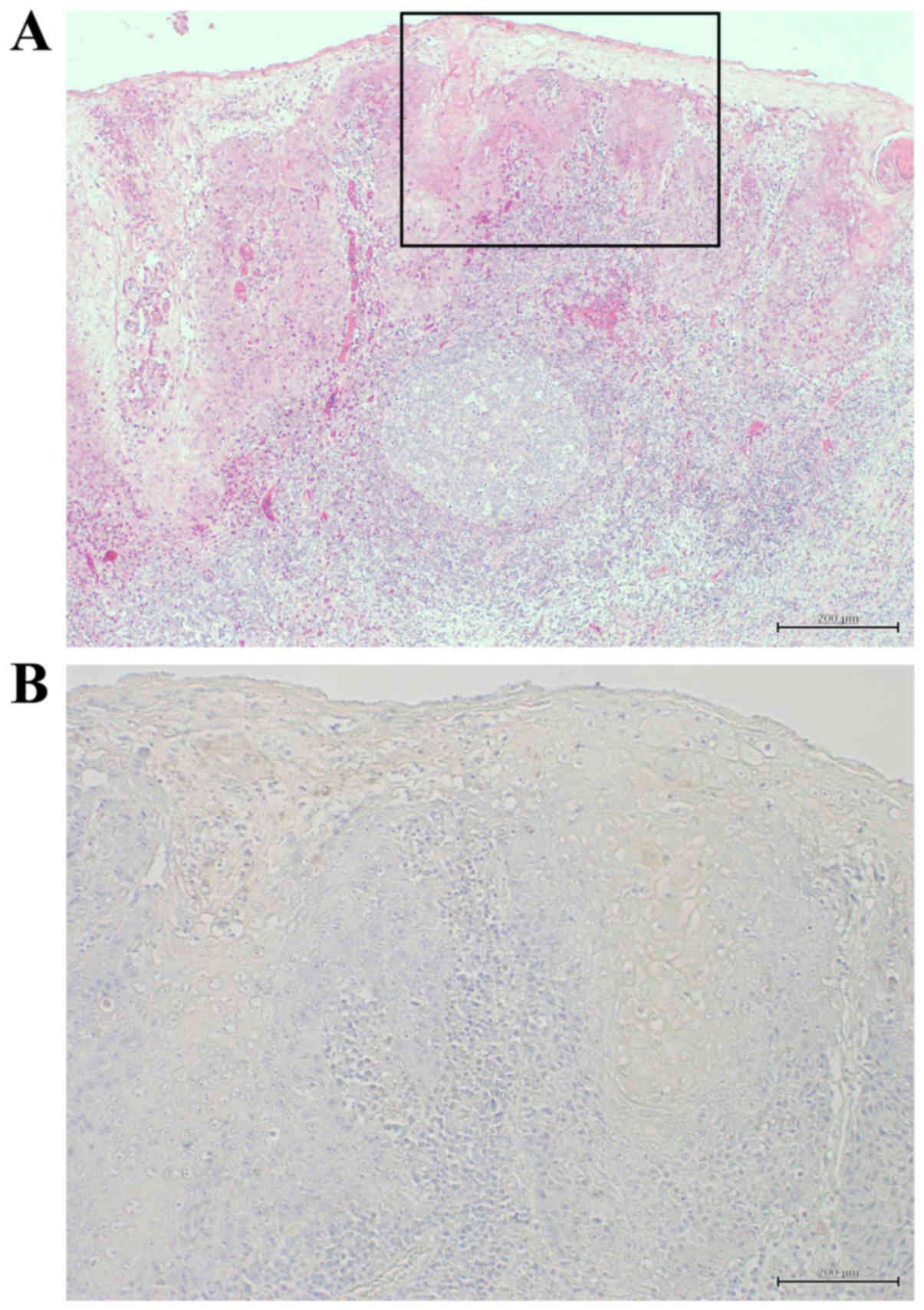|
1
|
Johnson JJ: Carnosol: A promising
anti-cancer and anti-inflammatory agent. Cancer Lett. 305:1–7.
2011. View Article : Google Scholar : PubMed/NCBI
|
|
2
|
Johnson JJ, Bailey HH and Mukhtar H: Green
tea polyphenols for prostate cancer chemoprevention: A
translational perspective. Phytomedicine. 17:3–13. 2010. View Article : Google Scholar : PubMed/NCBI
|
|
3
|
Johnson JJ and Mukhtar H: Curcumin for
chemoprevention of colon cancer. Cancer Lett. 255:170–181. 2007.
View Article : Google Scholar : PubMed/NCBI
|
|
4
|
Ji X, Avula B and Khan IA: Quantitative
and qualitative determination of six xanthones in Garcinia
mangostana L. by LC-PDA and LC-ESI-MS. J Pharm Biomed Anal.
43:1270–1276. 2007. View Article : Google Scholar : PubMed/NCBI
|
|
5
|
Akao Y, Nakagawa Y, Iinuma M and Nozawa Y:
Anti-cancer effects of xanthones from pericarps of mangosteen. Int
J Mol Sci. 9:355–370. 2008. View Article : Google Scholar : PubMed/NCBI
|
|
6
|
Matsumoto K, Akao Y, Ohguchi K, Ito T,
Tanaka T, Iinuma M and Nozawa Y: Xanthones induce cell-cycle arrest
and apoptosis in human colon cancer DLD-1 cells. Bioorg Med Chem.
13:6064–6069. 2005. View Article : Google Scholar : PubMed/NCBI
|
|
7
|
Matsumoto K, Akao Y, Yi H, Ohguchi K, Ito
T, Tanaka T, Kobayashi E, Iinuma M and Nozawa Y: Preferential
target is mitochondria in alpha-mangostin-induced apoptosis in
human leukemia HL60 cells. Bioorg Med Chem. 12:5799–5806. 2004.
View Article : Google Scholar : PubMed/NCBI
|
|
8
|
Moongkarndi P, Kosem N, Kaslungka S,
Luanratana O, Pongpan N and Neungton N: Antiproliferation,
antioxidation and induction of apoptosis by Garcinia
mangostana (mangosteen) on SKBR3 human breast cancer cell line.
J Ethnopharmacol. 90:161–166. 2004. View Article : Google Scholar : PubMed/NCBI
|
|
9
|
Nakagawa Y, Iinuma M, Naoe T, Nozawa Y and
Akao Y: Characterized mechanism of alpha-mangostin-induced cell
death: Caspase-independent apoptosis with release of endonuclease-G
from mitochondria and increased miR-143 expression in human
colorectal cancer DLD-1 cells. Bioorg Med Chem. 15:5620–5628. 2007.
View Article : Google Scholar : PubMed/NCBI
|
|
10
|
Wiley SR, Schooley K, Smolak PJ, Din WS,
Huang CP, Nicholl JK, Sutherland GR, Smith TD, Rauch C, Smith CA,
et al: Identification and characterization of a new member of the
TNF family that induces apoptosis. Immunity. 3:673–682. 1995.
View Article : Google Scholar : PubMed/NCBI
|
|
11
|
Griffith TS, Stokes B, Kucaba TA, Earel JK
Jr, VanOosten RL, Brincks EL and Norian LA: TRAIL gene therapy:
From preclinical development to clinical application. Curr Gene
Ther. 9:9–19. 2009. View Article : Google Scholar : PubMed/NCBI
|
|
12
|
Yuan K, Sun Y, Zhou T, McDonald J and Chen
Y: PARP-1 regulates resistance of pancreatic cancer to TRAIL
therapy. Clin Cancer Res. 19:4750–4759. 2013. View Article : Google Scholar : PubMed/NCBI
|
|
13
|
Kumazaki M, Shinohara H, Taniguchi K, Ueda
H, Nishi M, Ryo A and Akao Y: Understanding of tolerance in
TRAIL-induced apoptosis and cancelation of its machinery by
α-mangostin, a xanthone derivative. Oncotarget. 6:25828–25842.
2015. View Article : Google Scholar : PubMed/NCBI
|
|
14
|
Fukuda M, Horiuchi Y, Oku Y, Ishikawa M,
Suka N, Suzuki S, Kusama K and Sakashita H: Induction of apoptosis
in human salivary gland tumor cells by anti-NCAM antibody. Oncol
Rep. 14:1143–1149. 2005.PubMed/NCBI
|
|
15
|
Pindborg JJ, Reichart PA, Smith CJ and van
der Waal I: Histological Typing of Cancer and Precancer of the Oral
MucosaWorld Health Organization International Histological
Classification of Tumors. 2nd edition. Springer-Verlag Berlin
Heidelberg; New York: pp. 11–38. 1997
|
|
16
|
Sobin LH and Wittekind CH: International
Union Against Cancer (UICC) TNM Classification of Malignant Tumors.
6th edition. John Wiley and Sons, Inc.; New York: 1997
|
|
17
|
Shi SR, Key ME and Kalra KL: Antigen
retrieval in formalin-fixed, paraffin-embedded tissues: An
enhancement method for immunohistochemical staining based on
microwave oven heating of tissue sections. J Histochem Cytochem.
39:741–748. 1991. View Article : Google Scholar : PubMed/NCBI
|
|
18
|
Neville BW and Day TA: Oral cancer and
precancerous lesions. CA Cancer J Clin. 52:195–215. 2002.
View Article : Google Scholar : PubMed/NCBI
|
|
19
|
Silverman S Jr: Early diagnosis of oral
cancer. Cancer. 62 Suppl 8:1796–1799. 1988. View Article : Google Scholar : PubMed/NCBI
|
|
20
|
Kim MY, Kim CS, Lee SH, Kim JW and Jang
HJ: A clinicostatistical analysis of oral cancer patients for
recent 8 years. J Korean Assoc Oral Maxillofac Surg. 33:660–668.
2007.
|
|
21
|
Lee EJ, Kim MJ and Myoung H: Change of the
invasiveness with selective Cox-2 inhibition in an oral squamous
cell carcinoma cell line, KB: Preliminary in vitro study. J Korean
Assoc Oral Maxillofac Surg. 33:103–108. 2007.
|
|
22
|
Sun J, Chu YF, Wu X and Liu RH:
Antioxidant and antiproliferative activities of common fruits. J
Agric Food Chem. 50:7449–7454. 2002. View Article : Google Scholar : PubMed/NCBI
|
|
23
|
Temple NJ and Gladwin KK: Fruit,
vegetables, and the prevention of cancer: Research challenges.
Nutrition. 19:467–470. 2003. View Article : Google Scholar : PubMed/NCBI
|
|
24
|
Hung SH, Shen KH, Wu CH, Liu CL and Shih
YW: Alpha-mangostin suppresses PC-3 human prostate carcinoma cell
metastasis by inhibiting matrix metalloproteinase-2/9 and
urokinase-plasminogen expression through the JNK signaling pathway.
J Agric Food Chem. 57:1291–1298. 2009. View Article : Google Scholar : PubMed/NCBI
|
|
25
|
Lee YB, Ko KC, Shi MD, Liao YC, Chiang TA,
Wu PF, Shih YX and Shih YW: alpha-Mangostin, a novel dietary
xanthone, suppresses TPA-mediated MMP-2 and MMP-9 expressions
through the ERK signaling pathway in MCF-7 human breast
adenocarcinoma cells. J Food Sci. 75:H13–H23. 2010. View Article : Google Scholar : PubMed/NCBI
|
|
26
|
Kim SY, Kim JH and Song JJ: c-Cbl
shRNA-expressing adenovirus sensitizes TRAIL-induced apoptosis in
prostate cancer DU-145 through increases of DR4/5. Cancer Gene
Ther. 20:82–87. 2013. View Article : Google Scholar : PubMed/NCBI
|
|
27
|
Cho SG and Choi EJ: Apoptotic signaling
pathways: Caspases and stress-activated protein kinases. J Biochem
Mol Biol. 35:24–27. 2002.PubMed/NCBI
|
|
28
|
Green DR and Reed JC: Mitochondria and
apoptosis. Science. 281:1309–1312. 1998. View Article : Google Scholar : PubMed/NCBI
|
|
29
|
Wang LG, Liu XM, Kreis W and Budman DR:
The effect of antimicrotubule agents on signal transduction
pathways of apoptosis: A review. Cancer Chemother Pharmacol.
44:355–361. 1999. View Article : Google Scholar : PubMed/NCBI
|















